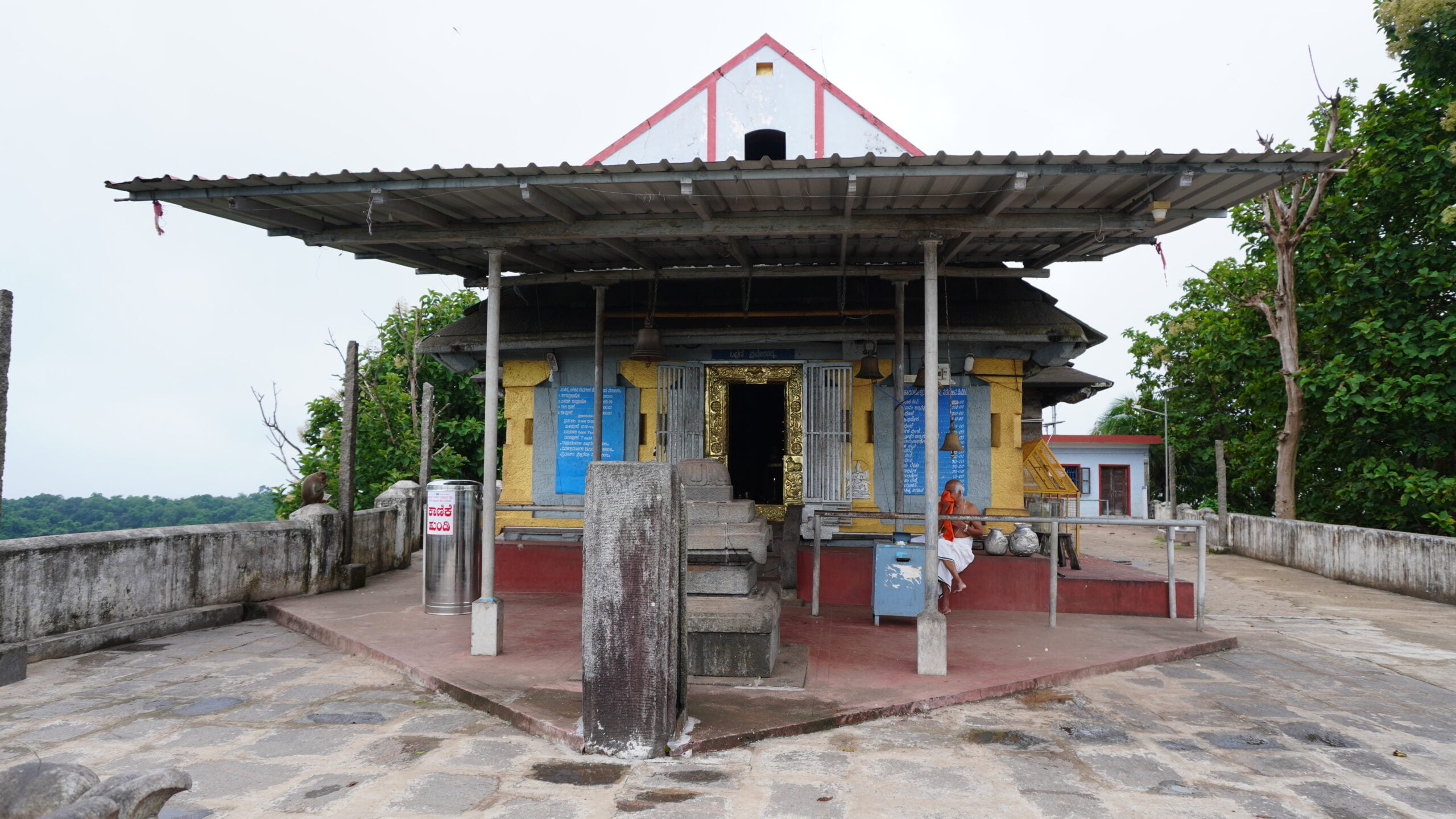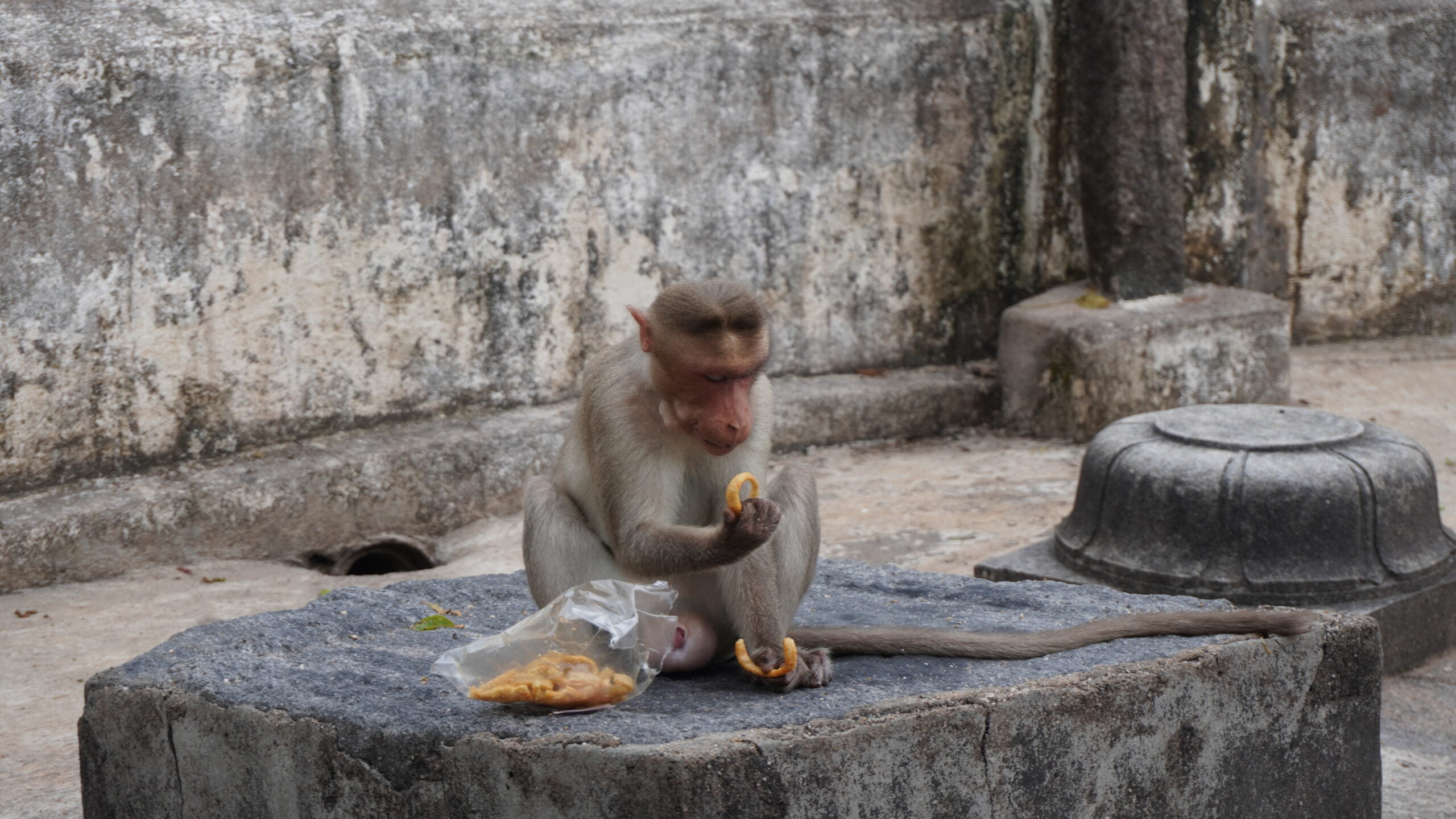Tranquil Serenity and Mythical Majesty: Exploring the Enchanting Karinjeshwara Temple
Nestled 44 kilometers away from the bustling city of Mangalore, lies the serene abode of Karinjeshwara Temple near Bantwal town. Embraced by the majestic Kodyamale hills and verdant forests, this sanctuary sits gracefully at an elevation of approximately 1500 feet above sea level. A colossal rock formation hosts the sanctum, comprising two distinguished edifices, the Parvathi and Karinjeshwara Temples. Tranquility reigns amidst the charming landscape adorned with quaint ponds and a picturesque park. However, amidst this tranquility, visitors are cautioned to be vigilant of the mischievous monkeys known for their antics of snatching bags or fruits.

Ascend to the zenith of this rock-hewn sanctuary via meticulously crafted steps numbering precisely 355. While the Parvathi temple can be conveniently accessed by road at the midway point, the Karinjeshwara temple atop the hill mandates the ascent of these steps.
Monsoon unveils a spectacle of breathtaking beauty with lush greenery, meandering streams, and ethereal clouds enveloping the landscape. The architectural marvel of Karinjeshwara Temple embodies influences from both Vaishnava and Jain styles, echoing a rich tapestry of cultural heritage. A stone sculpture adorning the temple’s flag post bears testament to the royal patronage bestowed by the Kelady rulers under the Vijayanagara kingdom.
Temple rituals unfold between 9 am to 12 noon, featuring the sacred Mahapooja ceremony at noon, and resume from 6 pm to 7 pm.
Legend has it that Karinjeshwara Temple has stood sentinel across the four epochs or yugas delineated in Hindu mythology. Known as ‘Roudra Giri’ in Krutha Yuga, ‘Bhima Shaila’ in Dwapara Yuga, ‘Gajendra Giri’ in Thretha Yuga, and ‘Karinja’ in Kali Yuga, this temple embodies timeless resilience.
Fabled tales narrate how Bhima’s mere actions led to the creation of sacred ponds like ‘Gadha Theertha’, ‘Angushta Theertha’, and ‘Janu Theertha’. These ponds, along with ‘Handi Kere’ within the temple precincts, serve as perennial sources of water. Ritualistic baths in these waters on auspicious occasions are believed to possess healing properties for skin ailments.

The ancient tradition of feeding the resident monkeys endures, symbolizing a harmonious coexistence between humans and wildlife. As per custom, during the noon pooja, a generous offering of rice is made to the Lord, subsequently shared with the primates, notably led by the esteemed “Karinja Dadda”.
The temple comes alive during the grand festivities of Shivaratri, drawing devotees from far and wide to partake in the elaborate rituals spanning four days.
Amidst this spiritual enclave, lies another gem, the Narahari Sadashiva temple, nestled approximately 20 kilometers away, offering yet another tranquil retreat for seekers of solace and divinity.
Google Map:

